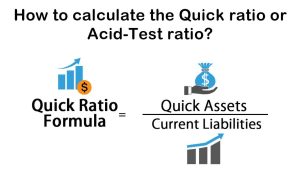The debt to equity ratio describes how much debt & equity a company utilizes to fund its activities.
The debt of a firm has always been its long-term debt, like loans with maturity periods of more than a year. Equity refers to shareholder equity or what the company’s owners possess. If the company is a sole proprietorship and you are the sole founder, your interest in the company is known as shareholder’s equity.
A firm’s capital structure, or how it funds its activities, is made up of debt & equity. Both debt and equity have benefits and drawbacks.
The d/e ratio would be considered to determine the likelihood that a company will be unable to cover its debt obligations.
The debt and equity elements are drawn from the company’s balance sheet on the right hand side. Debt is the amount owed by the company to its creditors, including interest. Just long-term debt is considered for the d/e ratio calculation. Debt with a maturity date exceeding a year are Long-term debt. Mortgages, long-term contracts, as well as other long-term lending are examples of long-term debt.
If ABC ltd receive a $100,000 loan & out of which $20,000 is due this year, the $20,000 is deemed a current liability, while the other $80,000 is called a long term debt.
A firm’s total assets minus its total liabilities is shareholders‘ equity. The balance is the firm’s shareholder stake. It is the numerator of the d/e ratio formula.
Must read – What is return on capital employed?

Debt to Equity Ratio Formula
The d/e ratio is determined by the following formula.
DE Ratio = Total Liabilities / Shareholder’s Equity
Liabilities: Only long term debt is taken.
Shareholder’s equity = Total Assets – Total Liabilities
What is the Ideal Debt to Equity Ratio?
In brief, the DE ratio must not exceed 2. A DE ratio of 2 indicates that a corporation has one portion of its own capital for each and every two portions of debt. This is exceptionally high, indicating a high level of risk.
The broad explanation is there is no real thing as a perfect ratio. Yes, a ratio greater than two is extremely high, because in certain sectors, such as manufacturing and mines, the usual DE ratio could be two or higher. In many other sectors, a DE ratio of two may not be considered natural. The industry average is what we all want to look for.
As a result, we could conclude that precaution must be practiced while comparing DE, and the same must be done when contrasting DE to firms in the same market and sector comparison.



